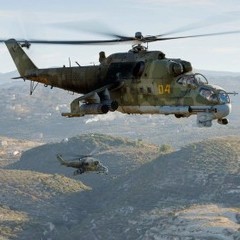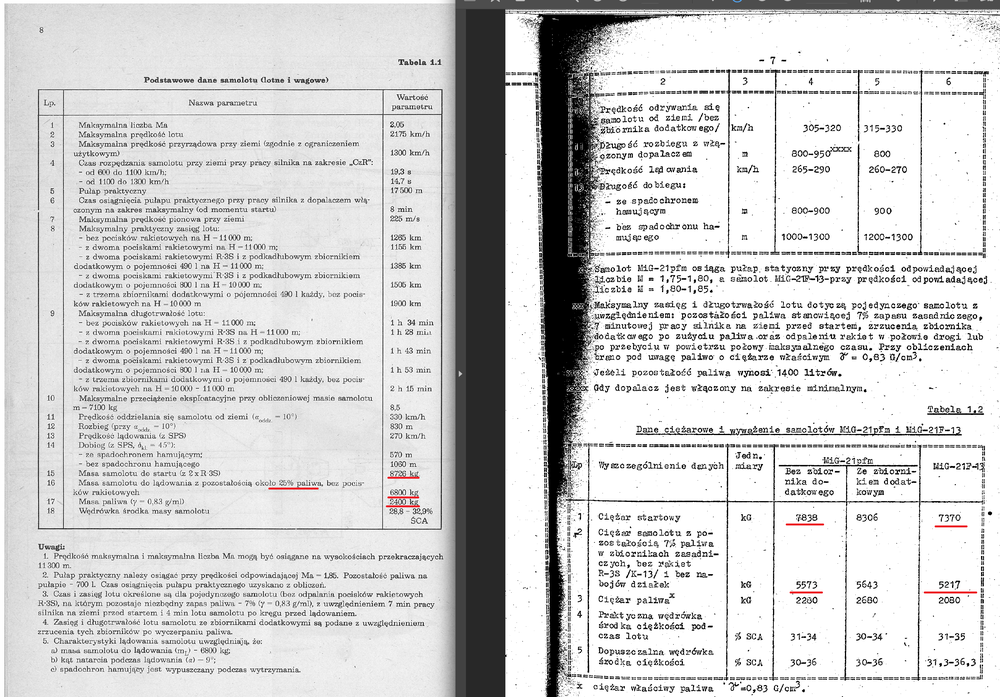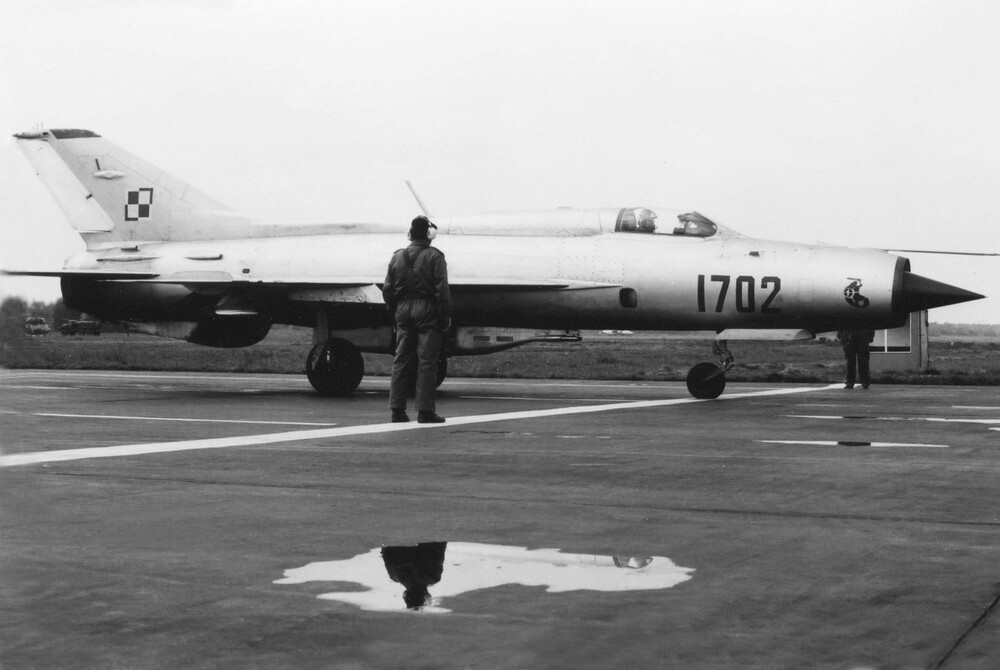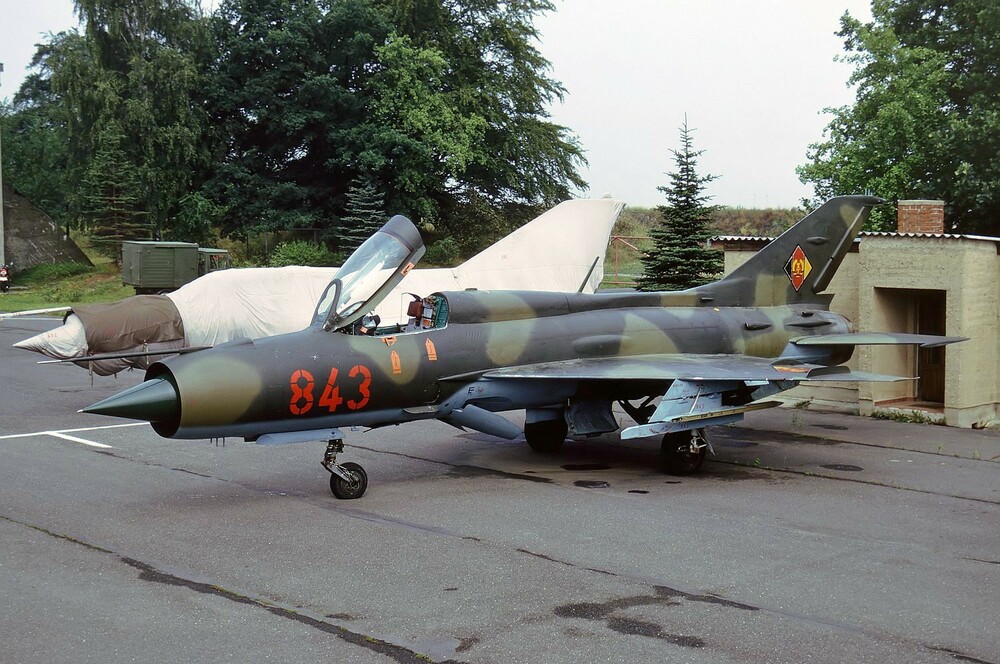-
Posts
1260 -
Joined
-
Last visited
-
Days Won
1
About Hiromachi
- Birthday 06/20/2020
Personal Information
-
Flight Simulators
DCS, Il-2 and FSX
-
Location
Poland
Recent Profile Visitors
20820 profile views
-
Alright. It worked in my tests, but I will discuss this with the team and see where is the problem. Thank you for the feedback!
-
Did you remember to add the map to the maps table in the R_NAV_data.lua? Kneeboard will be created once RSBN is deemed satisfactory for releasing in a module update.
-
Yes. Eventually all of them. Recently I have prepared the nav file for the Sinai. Please try it out and let me know what you think, while I prepare nav data for the remaining maps. R_NAV_data_Sinai.lua
-

Abandoned? (Update: No, a Fun Plane + Good Module)
Hiromachi replied to Gasman6's topic in Christen Eagle II
Yes indeed, timing was perfect -
So quick overview of the manuals indicated to me only one major difference, in that RP-21M is also capable of detecting, intercepting and automatically tracking a target under pulsed non-synchronous interference conditions ( 1. Asynchrone Impulsstörungen - http://www.mig-21-online.de/mig-21/funkmessvisier/abfangen-fm-stoerungen/) and under conditions where passive interference dipoles ( 2. Chaff) are released toward the interceptor aircraft: 1. 2. There are probably more differences, but it seems RP-21 to RP-21M upgrade focused on filtering ECM.
-
Both PF and PFM had the RP-21M, but in regards to the former one, it was introduced later in the production or during major overhaul. I have somewhere a list of modifications. Or I can just go through manuals and see if I can observe differences in description. Nothing can be off beyond the extrapolation of the weight at landing with 7% fuel since specific number is listed only for 25% remaining fuel (6800 kg). If you don't like the numbers, you can take it with Mikoyan OKB: Internal fuel weight in the bis is 2400 kg, in the F-13 its 2080 kg, so 320 kg.
-
We've been there in October. Opinions about F-13 vary: F-13 take-off weight (two R-3S missiles) - 7370 kg, near empty weight (landing with 7% of fuel remaining and no missiles) - 5217 kg, PF take-off weight (two R-3S missiles) - 7838 kg, near empty weight (landing with 7% of fuel remaining and no missiles) - 5573 kg, Bis take-off weight (two R-3S missiles) - 8726 kg, near empty weight (landing with 25% of fuel remaining and no missiles) - 6800 kg. There is no 7% fuel equivalent in the book, but considering that total internal fuel weight is around 2400 kg, 7% would be around 6368 kg. This is based on the available manuals. Thats like ~20% (Take-off) to 22% (Landing), not 10%. But note that 7% fuel for the Bis is sub-optimal for landing configuration, changing landing characteristics. Either way its twice as much as you think.
-
-
The only jammers MiG-21 could have, would be the SPS-141 / 142 / 143 in SM-1 container (the entire pod should properly be called SM-1, SPS jamming station was merely a part of it along with ASO-2 chaff and flare dispensers). And according to Soviet, Polish and DDR manuals I have for MiG-21PF / PFM / SPS from the 1980s they also could be equipped with SM-1 jamming pods.
-
From which book is this picture? I have Praktische Aerodynamik für Flugzeuge mit Strahltriebwerken printed in Berlin in 1976 and used in Nationale Volksarmee Offiziershochule "Franz Mehring" in Rothenburg, but it doesnt have such fancy stuff
-
If it has thin keel than no.
-
Ugh, thats not really true. It never exceeded the numbers of PFMs, PFS or MF in any of the mentioned countries during 1967 war, War of attrition or 1973 war. Iraq for example received only 20 MiG-21FLs in 1966. In 1967 they already received 36 brand new PFMs and in 1971 further 20 MFs. Not to mention some 48 MiG-21bis delivered between 1979 and 1983. I think Iraq had even more Hawker Hunters than MiG-21FLs. That wouldn't be true for Egypt either, especially since immediately after 1967 war, Soviet Union decided to rapidly send 65 of their PFS to restore some of the Egyptian Air Force capabilities, which was virtually annihilated. Finally, Syrian Ordre de bataille as of October 1973, indicates that most common variant were PFMs and MFs. Note: all the above numbers are rounded for the purposes of quick search and based on slightly dated, but still likely some of the most accurate, publications: - Arab MiGs. Volume 5: October 1973 War, Part 1, - Iraqi Fighters: 1953-2003: Camouflage & Markings Voila FLs are easy to distinguish as they had no SRO antennas. Poland kept 21PF in service until 1989. And they were retrofitted with GP-9 as picture below shows: Polish PFs were modernized since the time of their arrival in 1964 / 1965, by replacement of RP-21 blocks with RP-21M, installation of SBKO-E blocks for identification control and couple other things like installation of the hook under the airframe to attach the mentioned GP-9 pod.
-
I suppose this thickness values differing from the documented ones are an attempt to factor something called hardness of the material. The line only says steel and there does not seem to be a place where you can input different hardness values for face, core and back, which should be the case as most of the WW2 armor used in those aircraft was face-hardened. For example Japanese 16.5 mm armor from the Ki-48 "Lily" bomber had hardness of the "face" of 555 - 589 (Brinell hardness) or 56 - 59 (Rockwell C hardness) and 302-341 for the "Back" (again in Brinell hardness scale). Similarly in Ki-43, Ki-61, etc. where 0.5 caliber AP bullets of penetration above 20+ mm failed to penetrate 13 - 15 mm plates. So this higher thickness might be a simple attempt, by using the material of the same properties, as DCS does not go into details of metallurgy and material properties, to factor that "the other way".
- 29 replies
-
- protection
- dcs
- (and 17 more)
-
Yes, I know. MiG-21M while having a number of interesting features, is the most pitiful (save for the abomination called SMT) of the 21s due to significant weight increase for no power increase. MF fairs a bit better due to installation of the R-13 engine. Eventually East German and Yugoslavian MiG-21Ms were upgraded to R-13 engine but its still below the thrust to weight ratio of earlier 21s or 21bis. Now I'm looking for a next book: "Als Pilot in zwei deutschen Luftwaffen".
-
When I found Mediascrpt two years ago i was amazed with the quality of their publications. Wish polish books about aviation units were even remotely close to that. I don't speak German really well, but in the era of smartphones and dynamic translators, one can make do. Can't wait for their books about JG-3 and JG-8. Some day, sometime, who knows. Though I favor PF over PFM because of the canopy.
















